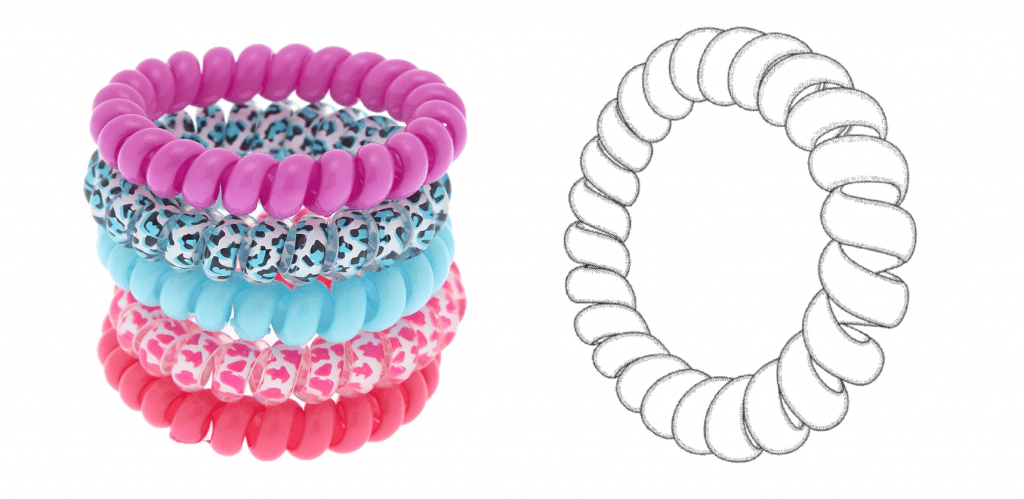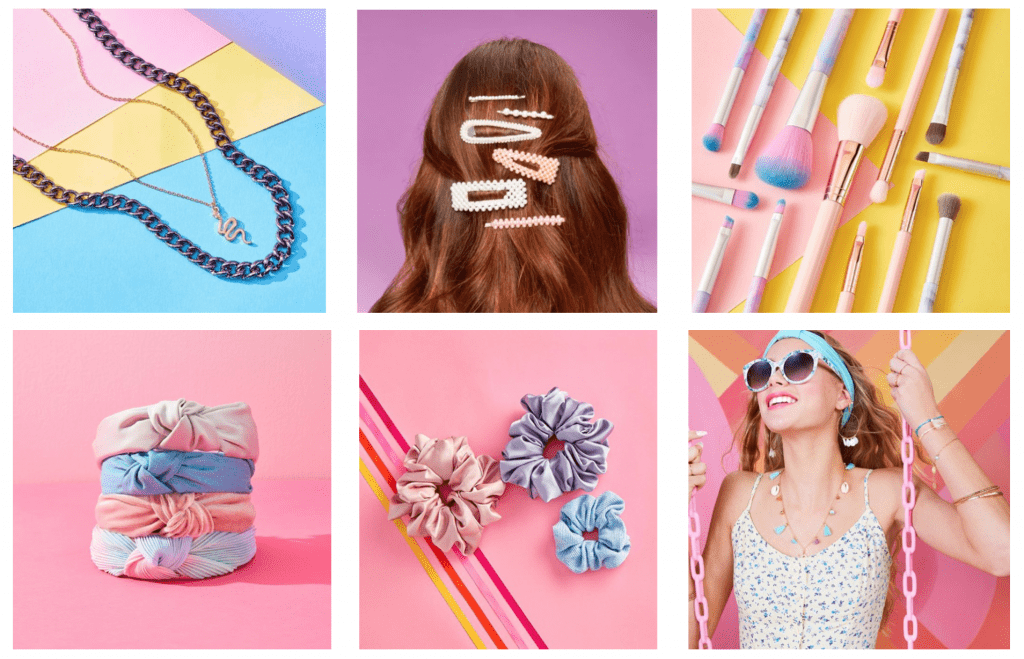Look beyond the nearly endless supply of earrings, tie-dye and leopard print scrunchies, butterfly-adorned hair clips, glitter-emblazoned iPhone cases, and the assortment of fake nail kits that populate the shelves of staple mall store Claire’s, and there is a wide array of plastic spiral hair ties. From the $5.99 metallic “mermaid” ones to the similarly-priced “bright leopard” variations, the hair accessories are hardly out of place among the teen-focused retailer’s accessories-centric stock. Yet, it is precisely these inexpensive hair ties that have landed Claire’s in the center of a newly-initiated legal squabble.
In the lawsuit that it filed late last month in a California federal court, Hoffman Estates, Illinois-headquartered Claire’s claims that CM National, Inc., a California-based marketing and design company that stocks its various consumer products with Walmart and Costco, and its owner Noam Krasniansky accused it of design patent infringement on the basis of these spiral hair ties.
According to Claire’s March 25 complaint, CM National and Krasniansky “sent the Claire’s legal department” and Claire’s “concessions partner CVS” – an email on December 18, 2019, “alleging that certain spiral hair ties sold by Claire’s infringe [Krasniansky’s] design patent.” CM National and Krasniansky went on to send a second letter to CVS’s counsel on March 10, 2020, “alleging infringement of [its] ‘patent rights’ with respect to its third-party suppliers, one of which is Claire’s.”
In response to CM National and Krasniansky’s letters, Claire’s filed suit, asking the court to invalidate the design patent at play, and thereby, “extinguish any and all infringement allegations by the defendants” and “mitigate [their] obvious attempts to improperly interfere with Claire’s’ contractual relationships.”

At the core of Claire’s quest to invalidate the defendants’ patent – which covers “the ornamental design for a convex hair band” – is its claim that there is an array of “anticipating patent literature and non-patent literature references [that] render [the patent] invalid.” For example, in furtherance of its claim that that the defendants’ design “was known for 138 years” before its patent was issued, Claire’s points to a long-expired patent that was issued on June 4, 1874 for “tubular wire forming a bracelet.”
More than that, Claire’s claims that the “use of phone cord designs as fashion accessories was well-known long before 2012,” which is when the defendants’ patent was issued. In particular, Claire’s asserts that “hair ties sold under the brand name SwirlyDo or SwirliDo have been on sale in the U.S. and disclosed in publications since at least 2009.” And the “SwirlyDo/SwirliDo product [has] the substantially same design” as the hair band design for which the defendants have a patent.
“Likewise, substantially the same design as [the defendants’] has been used by Evergreen Research and Marketing LLC since at least 2008 for its Insect Repelling Superband product, “ Claire’s claims, in addition to “other exemplary prior art.” (The existence of prior art is significant, as one of the key requirements for patent protection is that the invention – the design of defendants’ hair tie in this case – is novel, i.e., the invention was known to the public, described in a printed publication, and/or described in a published patent application or issued patent that was filed before the applicant filed for patent protection).
Claire’s argues that while the defendants may have been issued a patent by the U.S. Patent and Trademark Office back in 2012 for their design, they should not have been because the design is not actually novel, and with that in mind, it has asked the court to declare that the patent is invalid and to formally declare that its products “are not infringing, and have not infringed, directly, by inducement, contributorily, or in any way, either literally or under the doctrine of equivalents, any valid and enforceable claims” of the defendants’ patent.
*The case is Claire’s Stores, Inc., v. Noam Krasniansky and CM National, Inc., 2:20-cv-02757 (C.D. Cal).













